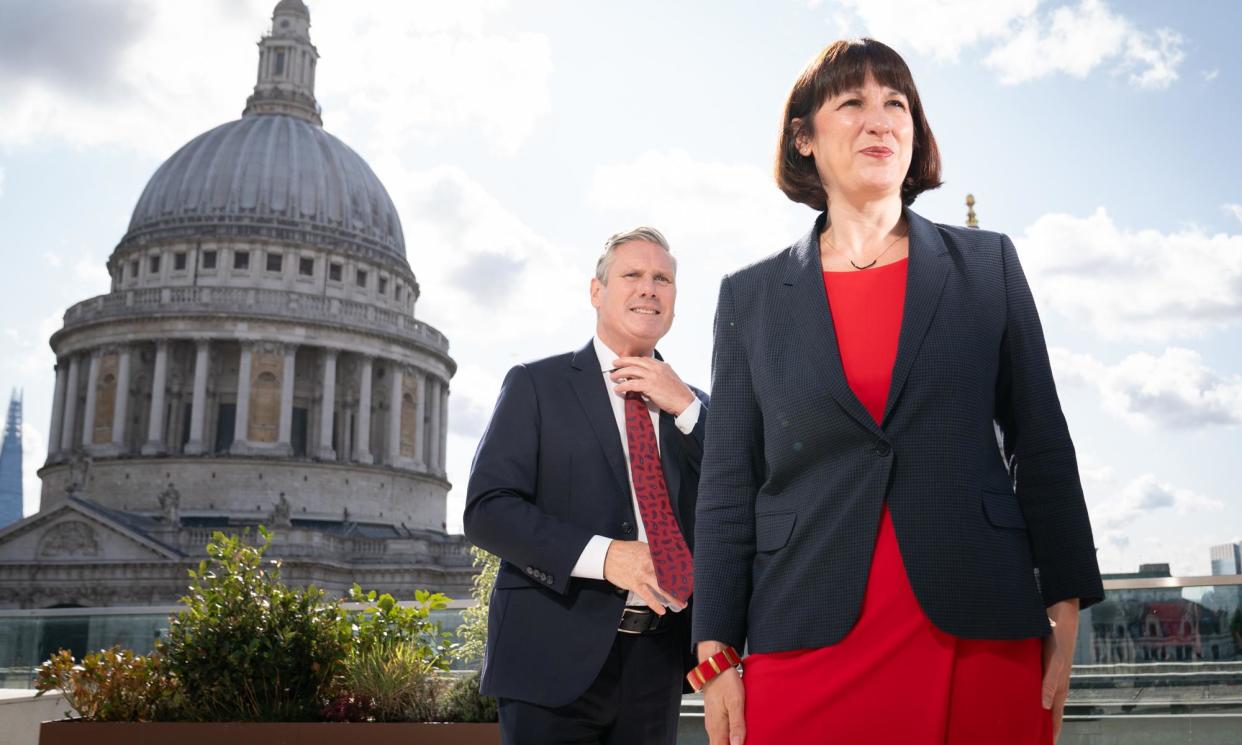Britain is crying out for more investment. Here’s why Labour shouldn’t worry about spending big

British wages are expected to remain below their 2008 level until 2028 in real terms, and the cost of living crisis is raging on. The UK is one of the most gas-dependent economies in Europe, while gas prices are still more than double their historic average. Addressing these problems requires more public investment to upgrade our energy system, accelerate the switch to renewables and help make homes and industry more efficient. This would help to create new jobs and make Britain less vulnerable to the whims of global energy markets, and until recently, both Labour and the Conservatives recognised that more government spending was necessary. But while Labour has cautiously restated its commitment to achieving climate targets, the Conservatives have reversed course, while attacking the opposition for its spending pledges.
We urgently need a more enlightened debate on this issue. The chancellor, Jeremy Hunt, has repeatedly argued that more investment will contribute to higher inflation and force the Bank of England to raise interest rates. Tory MPs have cited dubious unpublished studies in support of these arguments. At the same time, we hardly ever hear about the benefits that public investment could deliver. In 2022, the government froze public investment in cash terms, meaning it will fall to 1.8% of GDP in five years’ time. This is below pre-pandemic levels, which many economists already regarded as too low. Though Labour has promised to spend £28bn a year on green projects by the second half of the next parliament – subject to its fiscal rules – even this would still fall well below the average in other advanced economies.
There is substantial evidence that higher public investment boosts economic growth. Changes in fiscal borrowing and spending have a very small impact on inflation if it is near its 2% target, and if people expect it to remain so. In other words, if inflation is where it should be, borrowing to invest is unlikely to rock the boat. The Bank of England expects inflation to come back to target next year. At the Institute for Public Policy Research, we have argued that this might happen even earlier, due to over-aggressive tightening by the Bank. Markets increasingly think so too. Once inflation is back down to target, an increase in green spending of £28bn would have virtually no impact on inflation at all. This, by the way, is also why Rishi Sunak’s own policy of increasing public investment to 3% of GDP, which he announced as chancellor in 2020, did not raise any questions about whether it was inflationary.
Don’t take my word for it. The International Monetary Fund’s chief economist last year wrote: “The magnitudes of the effects [of fiscal tightening on inflation] appear to be small.” Economists from the Bank of England and the Bank of International Settlements also find very limited impact of extra government borrowing on inflation, if any at all. Recent experience also illustrates this: the US government had a significantly higher deficit than the UK last year, and yet it saw inflation fall to a lower level than we did. Meanwhile, global supply chains are recovering fast, causing the inflation threat to recede.
The bigger risk to the economy would be continuing to dither on investment. It’s increasingly clear that high-quality public investment can contribute to growth and thus make public finances more – not less – sustainable. The UK’s Climate Change Committee finds that over time, the “capital investment needed to get to net zero more than paid for itself through savings on fuel, healthcare, and other costs”. The Office for Budget Responsibility (OBR) has highlighted that “continued dependence on gas could be as expensive fiscally as completing the transition to net zero”. Another way of looking at this is as follows: with every year that we delay investment, and remain fixated on distracting debates about inflation, we forgo the economic benefits of energy savings and new green jobs.
Higher energy prices only increase the economic case for more investment. Household energy costs are still about double their pre-pandemic rate. This makes low-carbon technologies much more attractive. The International Energy Agency finds that investing in energy efficiency can boost GDP because it saves families and businesses money that they would otherwise spend on energy, allowing them to spend this money on other goods and services instead. McKinsey estimates that the returns of investment in clean energy can be more than double the amount invested. It is a major omission that many macroeconomic institutions – such as the UK’s fiscal policy watchdog, the OBR – don’t factor in such returns across all of their forecasts. Indeed, the OBR currently finds that a boost in public investment has only a small impact on the economy’s potential in the long term. We need a more forward-looking approach than this.
Labour may fear ongoing attacks from the Conservatives over its climate investment pledge. But the economic case is clear that we need more public investment to tackle the challenges of our time. As chancellor, Rishi Sunak touted the benefits of significantly boosting public investment. But his party is now making the misleading claim that green spending will increase inflation. Instead of arguing over such red herrings, Labour and the Conservatives should be debating how such investment should be spent, not whether it can be afforded.
Carsten Jung is a senior economist at the Institute for Public Policy Research

 Yahoo News
Yahoo News 
